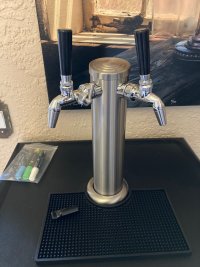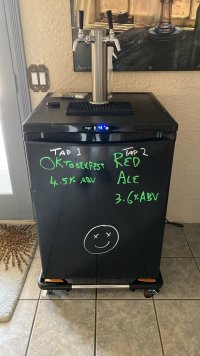ok, so I poured two pints, one after the other today and both had a good 1.5" of foam (that to me is too much).
The tap was ice cold on the second pour too.
So after taking care of those two, i poured another and this time I closed the FC up almost all the way, so it barely dribbled out. Took about 30 seconds to pour the pint, and the head was perfect on it.
So does this sound like it's carbonation or the pressure on the C02 is too high? Or something else?
The tap was ice cold on the second pour too.
So after taking care of those two, i poured another and this time I closed the FC up almost all the way, so it barely dribbled out. Took about 30 seconds to pour the pint, and the head was perfect on it.
So does this sound like it's carbonation or the pressure on the C02 is too high? Or something else?


























![Craft A Brew - Safale BE-256 Yeast - Fermentis - Belgian Ale Dry Yeast - For Belgian & Strong Ales - Ingredients for Home Brewing - Beer Making Supplies - [3 Pack]](https://m.media-amazon.com/images/I/51bcKEwQmWL._SL500_.jpg)



































